The many marvels dotting the dramatic Antrim coast of Northern Ireland include a cluster of eerily beautiful caves in the tidy village of Cushendun, about 60km north of Belfast. Formed by 400 million years of shifting red stone and the surging slate-blue Irish Sea, the caves inspire awed reflection upon the raw power of nature and the irresistible imprint of time, among other musings on the mystic.
A voice whispers into my ear: "That's where Melisandre gave birth to the shadow monster." So it is. I knew it was around there somewhere, as did the dozens of Game of Thrones fans surrounding me, feverishly snapping selfies before returning to their tour bus in a nearby car park.
The voice belongs to my own guide, Flip Robinson, a magnificently bearded 6ft 8in man who previously parlayed his stature into a gig as a stand-in for behemoth characters like Hodor and the Mountain. He waves to a colleague as leads led her group away as suddenly as it had arrived, and off toward Braavos or the Iron Islands or some other Thrones location down the road.
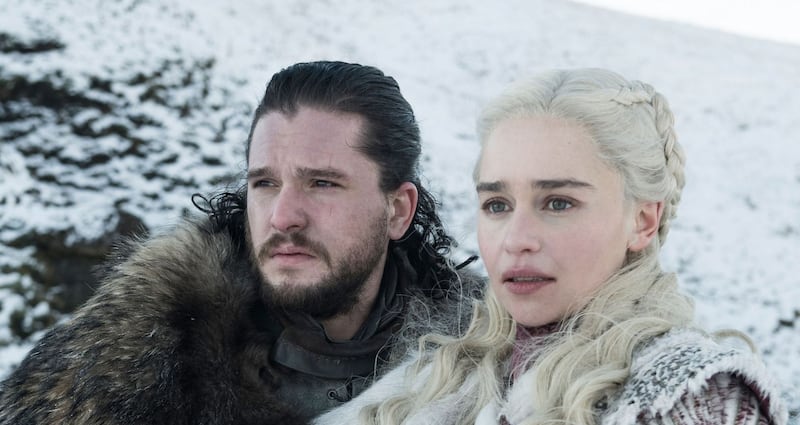
As Game of Thrones altered the TV landscape, it also altered actual landscapes: for millions of viewers all over the world, Northern Ireland has been redefined in the show's image
Since debuting as an expensive curiosity, in 2011, Game of Thrones has gone on to become one of the world’s most influential pop-culture franchises, leaving a dragon-size footprint on everything it touches. Nowhere is that dynamic more visible and tangible than the production’s former home, which, as the series kicks off its final season on Sky early in the morning of April 15th, is poised to serve as the keeper of the Thrones flame.
Game of Thrones has filmed all over the globe, including in Croatia, Spain, Morocco, Iceland and Malta, and other locations have become synonymous with the show, for better and worse. But as the home not only of the production, in Belfast’s Titanic Studios, but also of Westeros itself, Northern Ireland has been transformed in fact and figment. As the series altered the TV landscape, it also altered actual landscapes: for millions of viewers all over the world, this country has been redefined and remade in the show’s image.
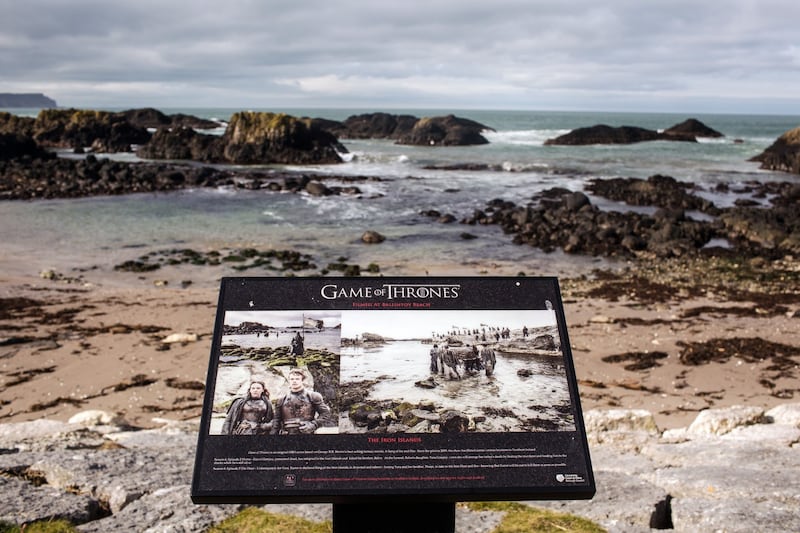
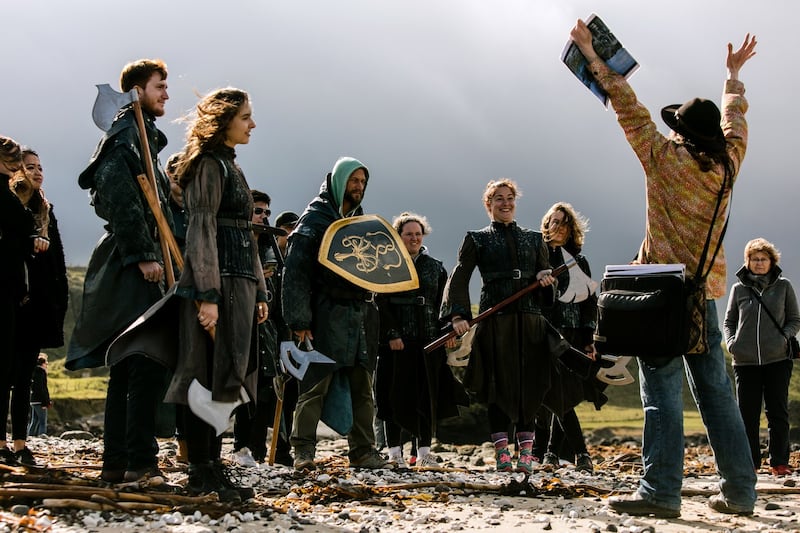
In the process, Belfast’s film-making industry has gone from a sleepy endeavour to a powerhouse. “Game of Thrones’ changed everything,” says Richard Williams, chief executive of Northern Ireland Screen, which promotes film and television production in the country. “We are relevant – it is basically night and day.”
The region has also built a tourism economy on the back of the show, especially on the coast, which provided much of the outdoor scenery. This majestic stretch of landscape and its famously scenic Causeway Coastal Route is now criss-crossed with motor coaches bearing Thrones pilgrims. Elsewhere, spots like the Castle Ward estate, near Strangford, site of the original Winterfell, have seen crowds swell with thousands of fans each year.
All told, Thrones has funnelled hundreds of millions of euro into the region. But the financial benefit might actually pale compared with a more existential one in a place that for decades was known internationally mostly for sectarian violence.
“Twenty years ago you would have been here writing about the Troubles, not a TV show,” Gary Hawthorne, one of my drivers, says. Robinson says, “Fake violence has helped bring us back from the real violence.”
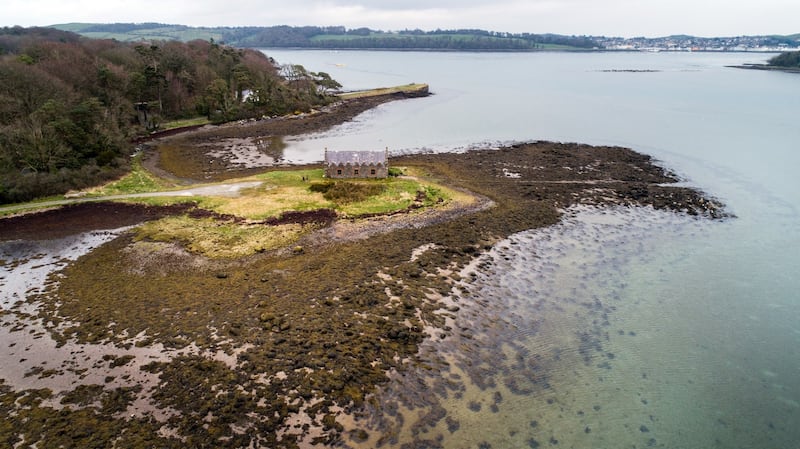
PART OF THE OUTSIZE IMPACT Thrones has had on Northern Ireland comes from the size of the production relative to the size of the place, which is a main reason it was such an ideal home base. Its 14,000sq km contains an astounding array of scenery that is particularly suited to a medieval fantasy saga.
“We had 63 locations in 10 years, every single one of them within and hour and a half of Belfast,” says Robert Boake, the supervising location manager in Northern Ireland. This becomes apparent on the afternoon I spend driving with Robinson along the causeway, a twisting roadway that hugs the U-shaped glens of the coast, the Irish Sea on one side and villages and vertiginous green hillsides, strewn with sheep, on the other.
In mere hours we span Westeros and beyond, moving from the Wall and Castle Black (Magheramorne quarry) to the stairs where Arya crawled out of the Braavos canal (Carnlough Harbour) to the rocky shoreline in Pyke (Ballintoy) where the Greyjoys did nutty Greyjoy stuff. We also close the shadow-baby loop, strolling around the Stormlands meadow (near Murlough Bay) where Renly made camp until Melisandre’s monster got ahold of him. Occasionally we stop to walk around and by turns get lashed with rain, pummelled by wind and caressed by crystalline sunshine.
At Fair Head, outside Ballycastle, we park in a muddy lot, drop a few pounds in the honour box and walk uphill through a horizontal downpour. About 20 minutes later the rain is gone, and the sun dries our faces as gale-force gusts threaten to blow us over the edge of a sheer cliff dropping 200m to the rocky coast.
We have arrived at Dragonstone, or the dazzling headland the Targaryen family stronghold was CGI’d upon, anyway. To stand where the impossibly green meadow gives way to gray granite cliffs plummeting toward the sea, as you note the spot where Tyrion and Daenerys argued over strategy, where Jon Snow met Drogon, is to feel the frisson of an epic story meeting an epic landscape.
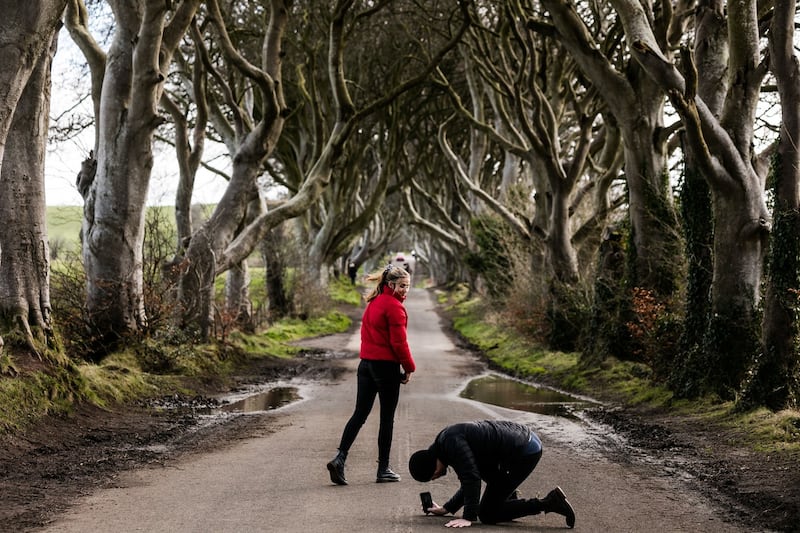
This reciprocity between project and place extends beyond the countryside. Another reason the marriage between Thrones and Northern Ireland has been happier than any on the show is that the production’s material needs – armour, medieval weapons, elaborate costumes and jewellery – meshed well with the area’s artisanal traditions. “We’re good at that stuff,” Williams says.
Even when a fight was filmed in a place like Morocco, the spears were almost always built in Belfast. Fans who would like to try on a replica of Cersei's crown can often do so at Steensons jeweller's in Ballymena, because that's where the original and other Westerosi finery were designed and made. (Though when I stop in, I am told the show had commandeered it for Season 8 – spoiler alert, I guess.)
This may be one explanation for the general lack of resentment evident in other locations besieged by Thrones tourists, like Dubrovnik, the exterior home of King’s Landing, which has been almost totally overrun. “There are not many people in this country who haven’t been involved in some direct capacity,” Boake says. “Their brother made something for the show, or their sister was an extra, or their cousin worked on an episode.”
As we drive along the coast, Robinson reminisces about his time as Hodor's double, dodging White Walker stuntmen in the Three-Eyed Raven's cave as he dragged Bran's double towards a green screen, in one of the show's most famous scenes. "Then Kristian Nairn held the door," he says. "He did the easy bit."
Robinson, who is 52, was a former carpenter laid low by the global financial crisis, working as a tour guide, when he applied to be a Thrones extra. Soon he was facing off with the likes of Lena Headey and Nikolaj Coster-Waldau as a stand-in for the undead Mountain, a stint that became the hook for his Giant Tours, which takes small groups of Thrones fans up and down the coast. "It changed my life around," he says.
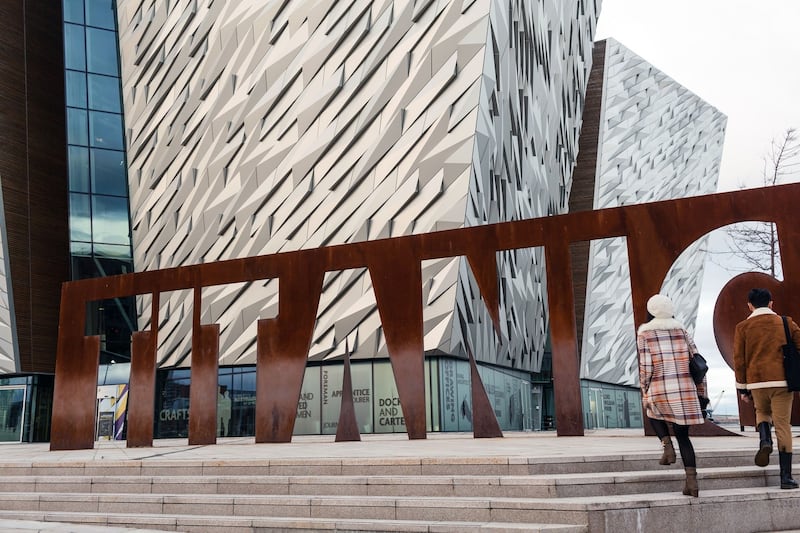
The show has done the same for Northern Ireland's movie industry. A few films had been shot in Belfast's cavernous old ship-painting hall, now part of Titanic Studios (so named because it's near where the doomed ocean liner, the city's other most famous export, was built). But since Thrones took up residence there, it has turbocharged the business, conferring the credibility that comes from hosting the most elaborate TV series in history and training a generation of crew and craftspeople.
Belfast has since added another enormous studio complex, Belfast Harbour Studios, the current home of the Superman prequel series Krypton, and postproduction houses like Yellowmoon, which worked on Thrones, have significantly expanded.
Then there’s the measurable financial impact: over eight seasons Game of Thrones has spent more than €320 million in the region, according to Northern Ireland Screen. Of course, two big questions hang over all the success. One involves how Brexit might affect the industry, though Williams notes that for the large-scale productions that are Belfast’s bread and butter, significantly more production spending comes from the United States than the European Union. The other: what happens now that Thrones is over? While everyone is cautiously optimistic that the planned Thrones prequel will go forward as a series, they aren’t reliant on it. “We’re getting calls every week,” Williams says.
“I’m not in the slightest gloomy about our potential after Game of Thrones,” he adds. “But, at the same time, I would never want to diminish how unique a thing Game of Thrones is.”
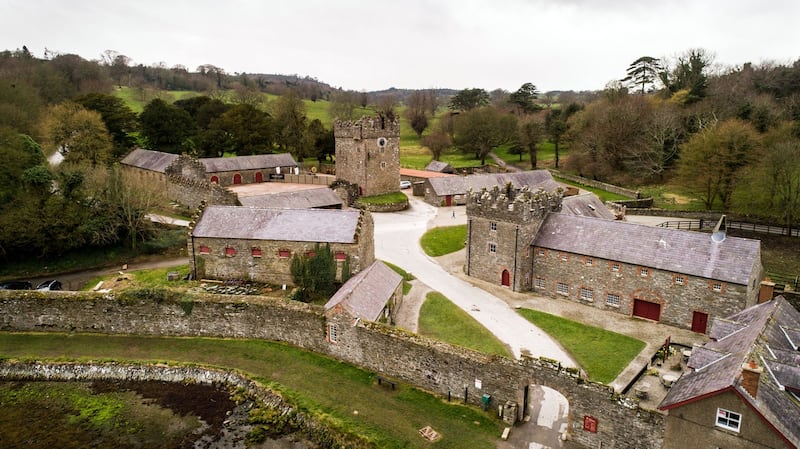
The most common analogy holds that Thrones is to Northern Ireland what the Lord of the Rings movies were to New Zealand: a pop-culture phenomenon that showcased a wondrous land for a global audience. But one difference is that Thrones has helped to redefine a city once known as one of the most dangerous places on Earth.
From the late 1960s to the late 1990s, the Troubles claimed some 3,600 lives in bombings, sniper attacks and bloody street battles that ripped Belfast apart.
Old divisions remain and have been infused with new anxiety by Brexit, because it is unclear how it will affect the open Border between Northern Ireland and the Republic of Ireland. But the show has helped “continue our peace process”, says Conleth Hill, better known to Thrones fans as the cunning Varys.
As one of the few actors from Northern Ireland in the cast – he grew up and still lives in Ballycastle – Hill has observed the show’s impact from both inside and out. “Before the Troubles there was loads of tourists coming through my town,” he says. “Now they’re coming again.”
THE SWARMS ARE SET TO INCREASE when HBO, the show's maker, turns several former Thrones sets across the region into immersive tourist attractions featuring costumes, weapons and other artefacts from the show. The first, the Game of Thrones Studio Tour at Linen Mill Studios, in Banbridge, is slated to open in spring 2020.
Tourism NI has aggressively courted Westeros set-jetters, creating a locations app and outfitting filming sites with information plaques for self-guided pilgrims, while keeping the many different Thrones tours from running afoul of HBO’s copyright lawyers. The show generates more than €50 million a year in tourism income, according to John McGrillen, the agency’s chief executive.
The agency also promotes the link between the show and the region's artisanal heritage with projects like the enormous Game of Thrones Tapestry, based on the Bayeux Tapestry in France; it uses Belfast's world-famous linen-weaving expertise to depict the Thrones story.
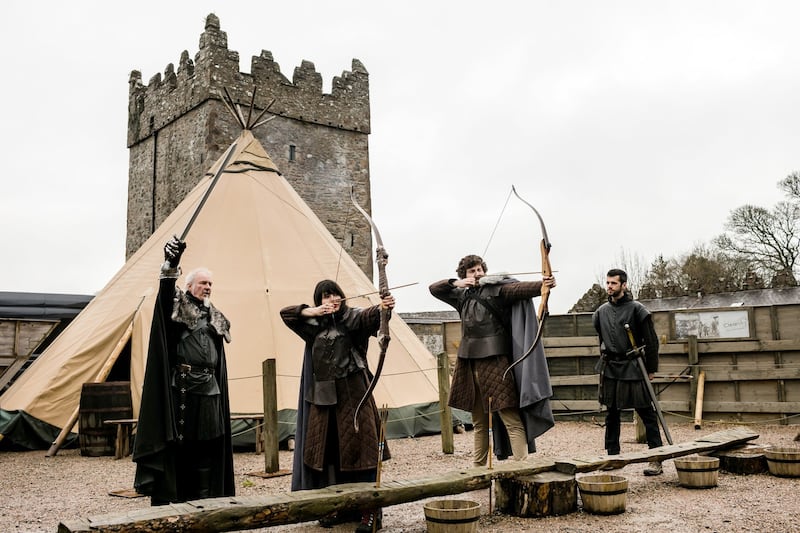
I see it at the Ulster Museum, a few floors above an exhibition about the Troubles. The 77m-long tapestry recaps the entire tale, from King Robert’s arrival at Winterfell in the pilot to the zombie dragon Viserion demolishing the Wall in the Season 7 finale. (The artists will extend it to add the rest of the story after Thrones ends.) Much like the show itself, the tapestry is fundamentally bonkers but astounding in scale and execution, and a tremendous kick to experience.
A still more immersive wallow in Thronesdom awaits me at Castle Ward, about an hour south of the city. My guide, William Van der Kells, greets me in full Northern regalia: a black cloak and faux-fur collar with a shiny gauntlet on one hand, holding a large sword made of "the finest Valyrian rubber". A longtime National Trust site, Castle Ward added a Winterfell tour after the show shot much of the first season on the property, and promptly brought in more than 25,000 additional visitors a year.
We shoot arrows on the spot where the Stark children did in one of the first scenes of the series, a few metres from where Tyrion smacked Joffrey
The Stark castle was based around the 1610 tower house, the same one Bran climbed to discover Jaime and Cersei in flagrante twincestus. We shoot arrows on the spot in the courtyard where the Stark children did in one of the first scenes of the series, a few metres from where Tyrion smacked Joffrey in one of the show’s most Gif-able moments. Then we drive through a driving rain to other locations on the property, such as the tree where Robb Stark and Talisa fatefully tied the knot, before taking cover beneath an old castle near the site of Walder Frey’s (digitally projected) one, where it all ended badly. “Around here you get all four seasons in a day,” Van der Kells says.
By then I am wearing the cloak and snapping my own selfies to send to my daughter. The only shadow monster in evidence is the storm cloud dumping rain on me. But as I peer through the gloom and fog at the choppy Strangford Lough, it occurs to me that although I’d come to see how Game of Thrones has redefined Northern Ireland, what strikes me most is how Northern Ireland has defined it. – New York Times










